Write Us
We are just a call away
[ LET’S TALK AI ]
X
Discover AI-
Powered Solutions
Get ready to explore cutting-edge AI technologies that can transform your workflow!

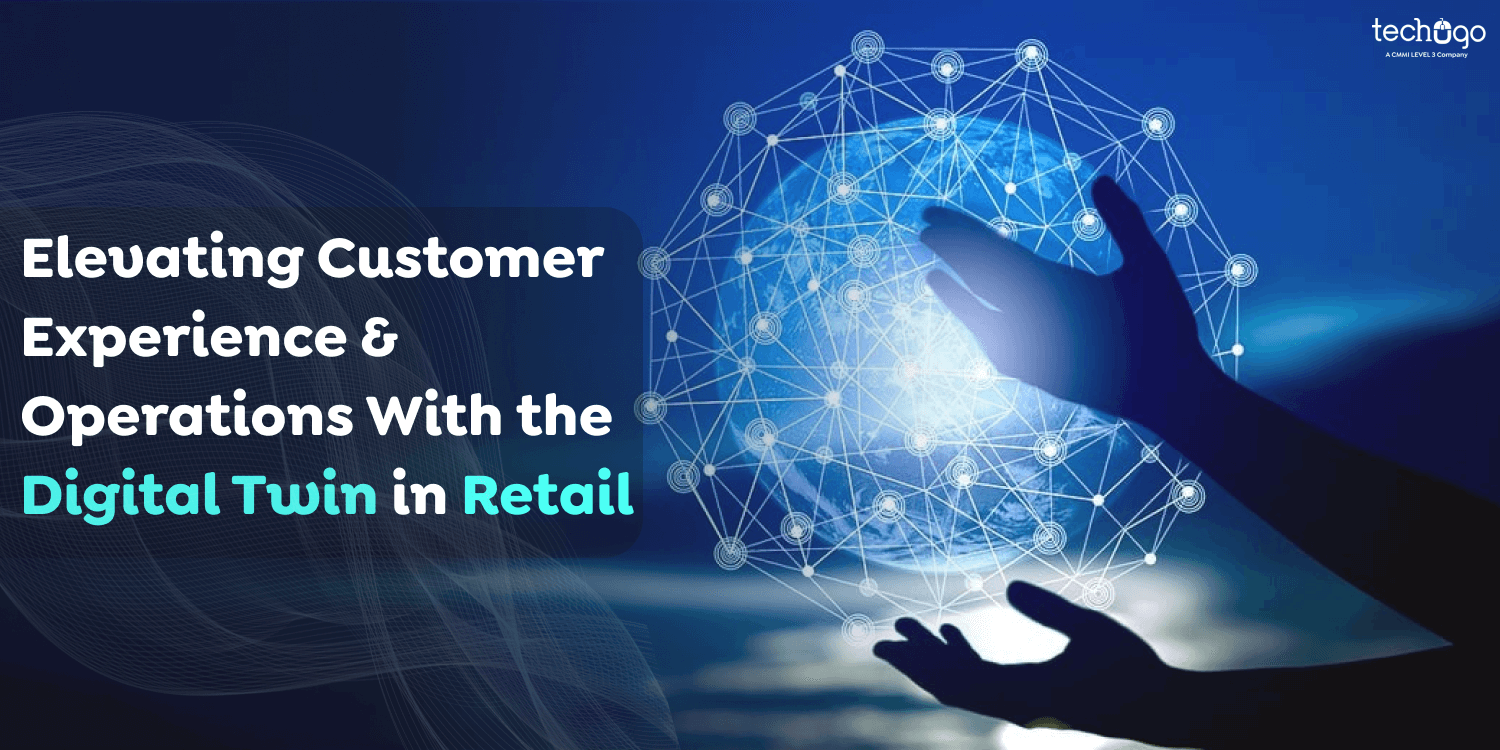
Digital twin technology is revolutionizing the retail sector by using virtual replicas of physical stores, inventory, and even behavior patterns of customers. These models of digital replicas enable retailers to simulate real-world scenarios, fine-tune operations, and enhance business. Indeed, with the evolution of the retailing landscape, digital twins are becoming a critical data-driven decision-making and strategic planning tool.
The transformation is occurring with the leadership of mobile app development companies in USA. They are leveraging this expertise to develop state-of-the-art digital twin products that help retailers derive important insights and grow very rich experiences. Innovations enhance the supply chain for retailers so that they can streamline everything in the store and extend customized services to their consumers.
The digital twin in retail consists of artificial intelligence (AI) and augmented reality (AR) technologies. AI uses predictive analytics and personalization based on processing tremendous data quantities. AR plays an essential role in user engagement improvements in terms of being more immersive and interactive and giving opportunities for a more realistic twin to use when real-time insights would help get competitive advantage among the head-starting retailers.
Also Read : The Impact Of Augmented Reality AR in Marketing Boosting Consumer Engagement
Digital twin technology has the power to revolutionize the retail industry through the use of virtual copies of a physical store, its inventory, and even customer behavioral patterns. These digital models help retailers model real scenarios, optimize operations, and personalize the customer experience. The digital twin in retail is therefore increasingly necessary for data-driven decision-making and strategic planning as the retail landscape changes.
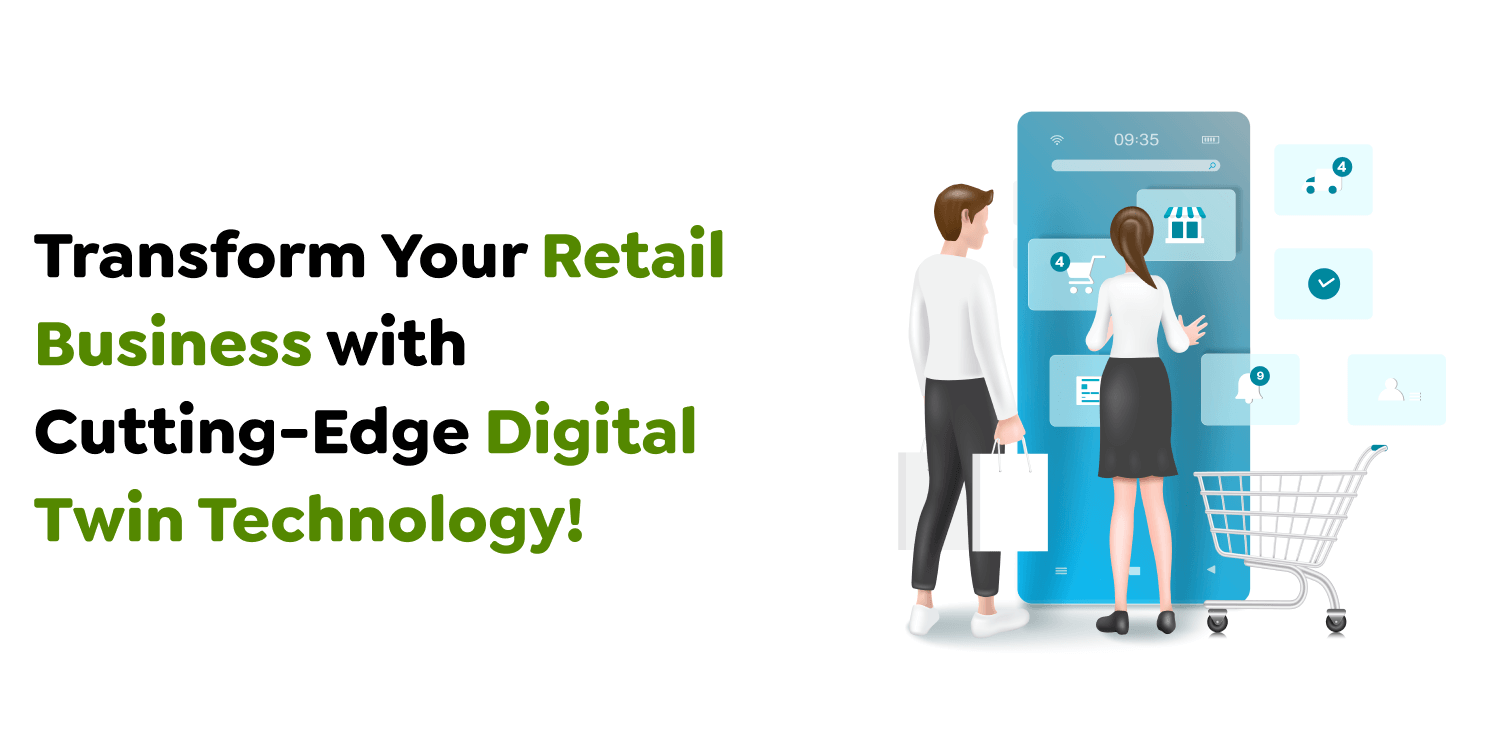
These developments are spearheaded by mobile app development companies in USA. They have their skills applied to delivering advanced digital twin solutions, which enable retailers to gain insightful information and provide highly engaging experiences. Such innovations support retailers in optimizing supply chains, improving store layouts, and offering customized services to customers.
Latest technologies involved in this regard are AI and augmented reality. AI drives digital twins by predictive analytics as well as personalization by considering such humongous amounts of data in the analysis. Augmented reality allows an enhancement of the user interface with immersing, interactive engagements. These two technologies complement digital twins to impart more precision with real-time insights; this is an edge any forward-thinking retailer needs above its competitors.
Also Read : Unpacking The Latest AI Trends In Fintech Market Shaping The Digital Economy
The two most dominant technologies that make digital twins efficient are artificial intelligence and augmented reality. For retail, artificial intelligence and augmented reality enhance customer engagement and other capability through real-time insights, which make for an immersive experience in a competitive marketplace.

Artificial intelligence enables digital twins in the interpretation of vast volumes of data collected from sensors, IoT devices, as well as user interactions. Data is translated into actionable insights via machine learning models and predictive algorithms in artificial intelligence. For instance, in the retail domain, AI analyzes patterns of customer behavior, level of inventory, sales trends, and predictions of demand to deliver information that could be used to prepare restocking schedules or give personalized product recommendations to the customers or even the configuration of the products in the store. Such insights can make a retailer proactively choose, whether it be changing the inventory because the seasonal demand changes or how the store might be arranged according to best pathways in the store.
Also Read : Unleashing The Power Of AI Transforming Software Development With Machine Learning
Moreover, with AI, anomaly detection is now feasible. It is possible to detect possible problems even before an event affects a retailer. For example, if digital twins are showing a supply chain inside a store where there is inconsistent movement of the same items, AI throws an alarm that it detects an anomaly and can potentially avoid interruptions or overstocking. It then leads to successful operations and savings on cost as well as customer satisfaction.
Augmented reality enhances digital twins by the ability to transfer virtual data into the real world through visual overlays. For retail, AR applications allow customers and store employees to get information digitally on products, layout, or sections in a store. For example, a customer holds up a smartphone in a store, and the AR will overlay information related to the product, including its price and customer reviews on the physical product, increasing discovery and consumer engagement with a product.
Retailers can easily try out the changing of layouts with digital twins, or reposition signage or promotional stands. With blueprints alone no longer good enough, AR is used to “see” potential in-store layouts through experimentation in different configurations and layouts, which improves traffic flow for customers and optimizes space utilization. This virtual trying-and-testing process can even reduce many physical reconfigurations that take up unnecessary time and resources.
AI and AR together take static models and transform them into dynamic tools for decision-making, customer experience, and operational efficiency in real-world retail environments.

Digital twins allow retailers to look into real-time data-driven insights that reflect improved decision-making and efficiency in operations. With virtual replicas of stores, inventory, and interactions with the customer, retailers can monitor everything effectively. The digital twin allows process managers to discern patterns and pinpoint inefficiencies in everything from supply chain management to particular store layout optimisation. This level of detailed visibility allows retailers to make the right adjustments to streamline operations, curb waste, and increase productivity.
Also Read : Investing in Manufacturing Inventory Management Software Cost And Benefits
The power of digital twins to better personalize, one of the most compelling retail impacts. With this, digital twin data may be blended with AI-driven insights to develop a personalized shopping experience that matches every customer’s behavior and preferences. It could then be possible to track digital twins to identify in-store browsing patterns among customers. Using that, real-time personalized recommendations or promotions could be made to the respective app user. This personalized solution elevates customer delight along with assisting in building the brand. Consumers feel honored and valued for their choices as each shopping session is personalized.
Digital twins can function and run accurate scenarios that test in the simulated world before actually applying them in real time. Various scenarios related to variations in shop layout or location of products will be attempted without risking costs through real-time testing of variants at stores. With predictive analysis by AI, retailers can determine advance demand and optimize stock levels and avoid overstocking and waste. These data-driven alterations result in labor, inventory, and operational cost savings.
Also Read : Aiops Platform AI Driven It Operations Revolution
Digital twins with AI provide retail with real-time problem solving. AI models monitor the data of digital twins and find anomalies or problems as they occur. For example, if a digital twin calculates that there is a sudden surge in demand for a specific product, then AI can suggest rapid replenishment or re-allocation to avoid a shortage. It will also alert management to an inventory level that drops below a certain threshold, even triggering automated responses in the process. With such quick insights and responses, retailers can proactively address any potential disruptions to both the operational stability and the customer’s points of view.

Integrating the digital twin in a retail app is important for the retailers by a mobile app development company in USA. The company, focusing on the designs and the developments on individualized apps for both mobile and web apps, will create spaces or means for visualizing, managing and monitoring the virtual ones effectively. Applications basically offer the interfaces to inventory-based real-time information like the nature of customers at various times; even the space utilization can be made known, having been developed by the specific digital twin models. To guarantee digital twin-enabled applications are easy, scalable, and can enable advanced features like AI-based analytics and AR visualizations, the development company provides these capabilities.
Also Read : Mobile Vs Web Apps Choose The Right Path For Your Business
Mobile app development companies can create inventory management software that integrate with a retailer’s digital twin, allowing staff to track stock levels, monitor shelf availability, and receive alerts for low-stock items in real time. These apps, powered by AI, can predict demand fluctuations, helping retailers avoid stockouts and optimize inventory across locations.
Digital twin-enabled shopping apps can offer customers a personalized experience based on their browsing history and in-store behavior. By integrating digital twin data, these apps can recommend products, send customized promotions, and provide interactive features such as virtual try-ons with AR, making shopping more engaging and tailored to individual preferences.
For retailers focused on improving in-store experience, a mobile app development company can build augmented reality apps that allow managers to visualize potential store layouts before making changes physically. These apps can integrate digital twin models to simulate customer flow, test display arrangements, and adjust signage, optimizing space utilization without costly physical reconfigurations.
For complex supply chains, a mobile app development company can create applications that provide visibility into every stage of the supply process. If integrated with data from a digital twin, the apps can track shipments, predict delays, and even suggest optimal delivery routes to increase supply chain efficiency and decrease operational costs.
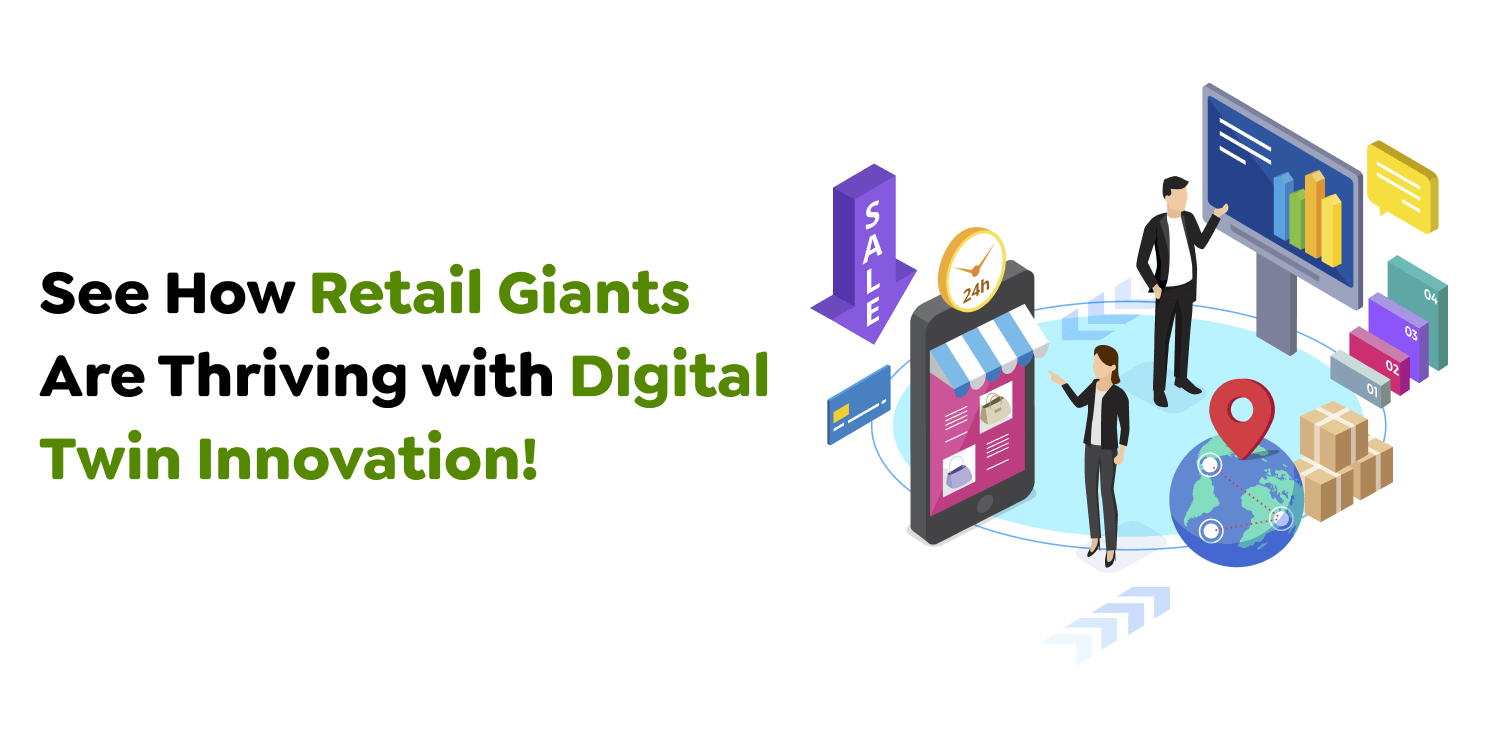
Walmart has embraced digital twin technology that assists in the company’s optimization of the layouts of its stores and its inventory management. It could analyze and test various ways of placing products without the need to make them physically by duplicating the existence of the stores in virtual form. Walmart’s application of artificial intelligence allows it to analyze customer buying patterns, and this streamlines the way of both inventory management and restocking. This will immediately decrease stock outs along with displaying high-demand items at a point to boost sales.
Also Read : Grocery Inventory Management Software Development in 2023
Furthermore, Walmart embraces AR. It enables customers to interact with the product through mobile apps, providing them with such information as prices and available promotions in the store. This combination of AI with AR, supported by models of digital twins, gives Walmart a chance to provide a more streamlined and immersive shopping experience, which will be customized according to the customer’s behavior and specific requirements of a given store.
Nike uses the modern technology of digital twins to develop an engaging shopping experience. The company has developed digital replicas of its products, so that a customer can virtually see and customize items before buying. Through augmented reality, apps by Nike are able to enable shoppers to see how a product would look and fit, right on their mobile devices.
This means that in using digital twins, AI powers Nike’s application of customer preference and behavior processing, yielding very personalized recommendations. Such an application may be saying that the app suggests specific customized products based on previous purchases and user activity. The connection between digital twins, AI, and AR makes for a seamless, engaging, and interactive customer experience so that they experience and engage in product experimentation and customization while improving customer satisfaction and loyalty.
Also Read : AIs Impact On Efficiency Risk Management And Insurance Software Development
The digital twin technology also aids Amazon in executing optimization logistics processes at its fulfillment centers by using digital models of its warehouses and process distributions. Based on real-time observation of inventory levels, the company makes accurate predictions in terms of demand to manage stocks more efficiently. This is where AI is so pivotal, analyzing data from the digital twin for predicting when stock replenishments might be needed, for optimizing pick-and-pack operations, and even order fulfillment times.
Amazon further adds AR in its digital twin approach in an effort to help create an experience that better helps the customer with its “View in Your Room” option within the Amazon application. Through AR, the customers are able to view what their homes might look like by incorporating a new piece of furniture or decorative item in a photograph taken within the application prior to buying the item. Merging the two streams, AI and AR with the technology behind a digital twin, allows for efficiency and more interactivity through this approach from Amazon as the company looks to offer customers more confidence-building moments through their shopping.
Also Read : Ship Management Software Reshaping The Logistics Industry Harnessing The Potential
Digital twin technology continues to evolve, bringing in AI and augmented reality solutions for a new view of the retail landscape that makes digital twins all the more powerful and transformative.
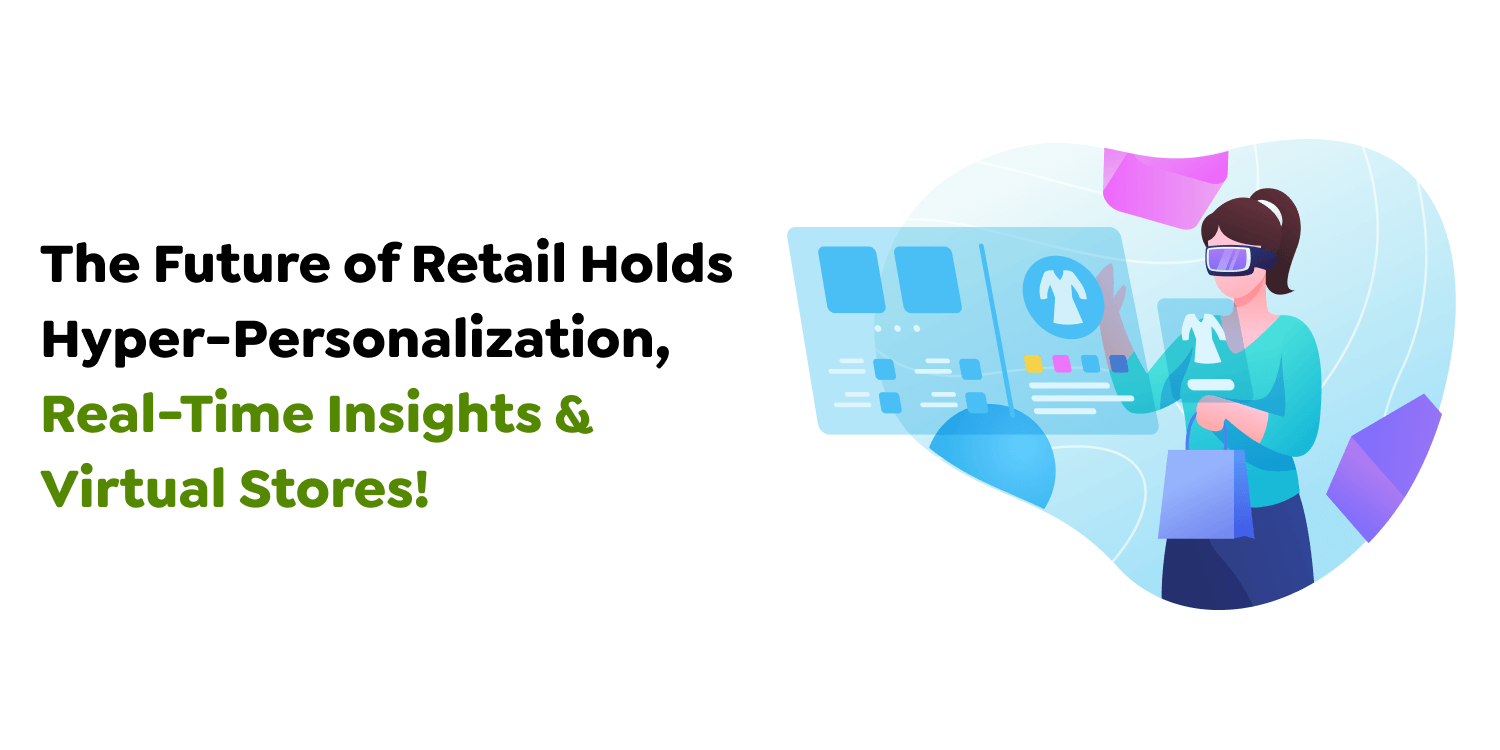
Hyper-personalized shopping with AI will now be easy through digital twins. Using analysis of individual data patterns, AI will be able to create a fine-grained digital twin profile for every shopper, meaning brands are able to deliver product recommendations, promotions, and even in-store layouts that will feel uniquely customized. Personalization at this level can lead to a new benchmark in customer loyalty, because shoppers will get experiences tailored right to their habits and interests.
Also Read : From Pixels To Wall Turning Your Design Idea Into Reality Via Interior Design Mobile Apps
Digital twins would offer retailers even more accurate, real-time analytics and predictive insights in the near future. This is because massive datasets will be crunched out within seconds by AI algorithms for these digital twins. In this regard, such digital twins will offer retailers real-time information on everything from inventory levels and supply chain disruptions to emerging shopping trends. It will enable retailers to take action on their feet in terms of dynamic pricing adjustments or replenishment of stocks instantly, thereby enhancing better customer satisfaction as well as operational efficiency.
When digital twins are available with advanced AR technology and greater accessibility, they will be able to enable customers to shop as if they were in a store, from the comfort of their own devices. Consumers, through virtual environments, would make use of AR to explore products, see real-time information, and navigate stores remotely. Retailers would, therefore, have the possibility of deploying AI-driven avatars or digital assistants within such virtual stores for instant customer service and recommendation.
Also Read : AR VR Technology The New Cornerstone Of The Real Estate Industry
The future digital twin will be seamless, integrating online and offline retail experience. With detailed digital replicas of stores and customer profiles, brands will unify in-store, online, and mobile interactions. For instance, a customer may begin shopping from mobile apps, get personalized recommendations in-store based on their online behavior, and complete the purchase online-all synched through a unified digital twin.
Also Read : The Rise Of Saudi Arabia Online Shopping App Revolutionizing Retail in 2025
Digital twin technology is rapidly transforming the retail sector by enhancing customer experiences, optimizing operations, and enabling real-time decision-making. From personalized shopping journeys powered by augmented reality to supply chain optimization through artificial intelligence, digital twins offer retailers the tools they need to stay ahead in a competitive market.
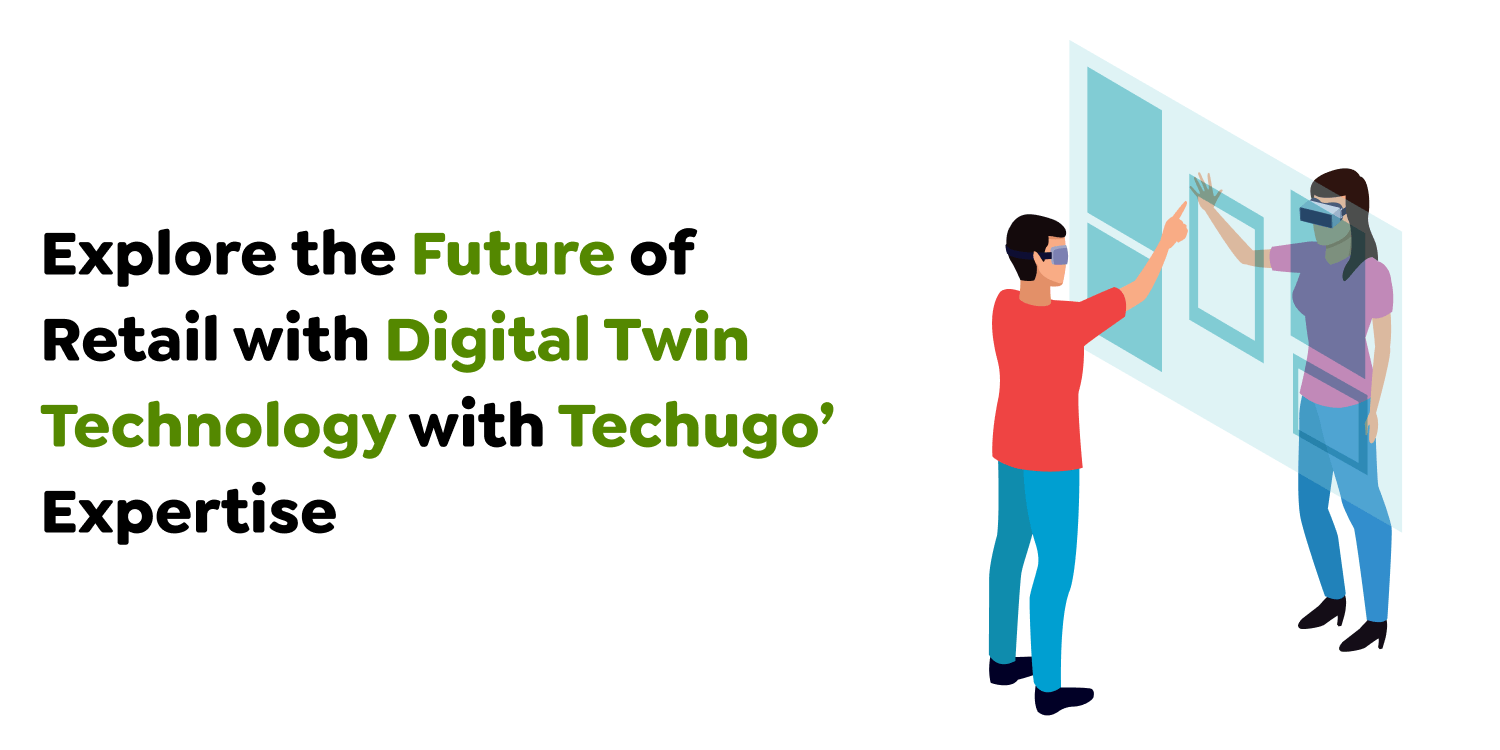
To fully unlock the potential of digital twin in retail business, it’s essential for retailers to partner with a specialized mobile app development company that can design and implement effective, customized solutions. By leveraging the expertise of an app development company, retailers can create seamless, data-driven applications that integrate digital twin technology into every aspect of their business, from customer engagement to inventory management.
To stay competitive and future-proof their operations, retailers should explore the endless possibilities that digital twin technology offers. Partnering with Techugo, an expert mobile app development company in USA, will ensure that your digital twin solutions are not only innovative but also aligned with your business goals, helping you deliver enhanced customer experiences and operational excellence. Let’s get in touch to elevate your retail business.
Write Us
sales@techugo.comOr fill this form